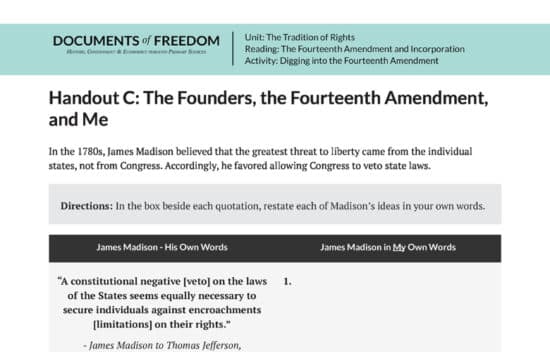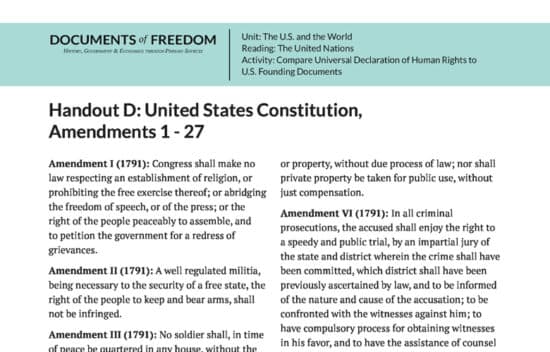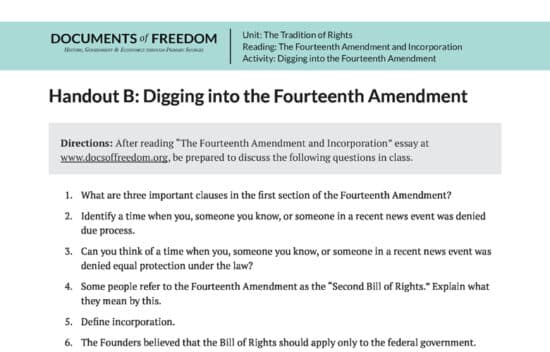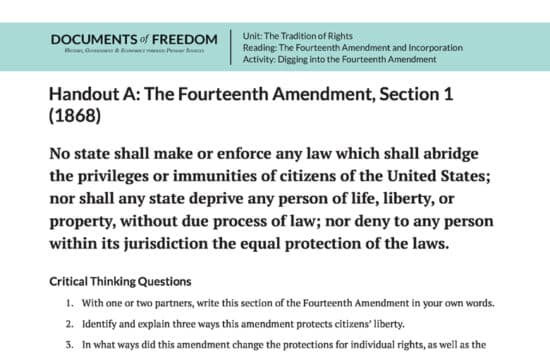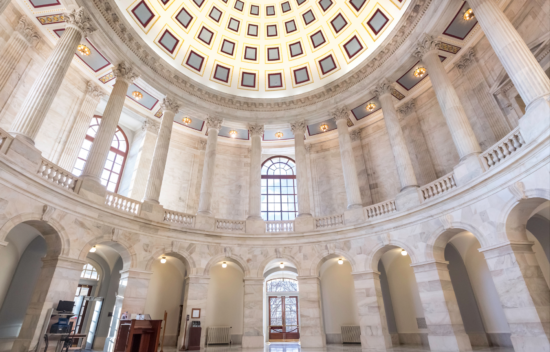



Fourteenth Amendment Playlist
25 items
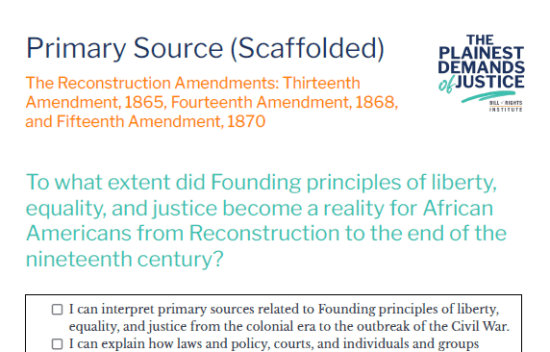
The Reconstruction Amendments: Thirteenth Amendment, 1865, Fourteenth Amendment, 1868, and Fifteenth Amendment, 1870
Activity
Activity
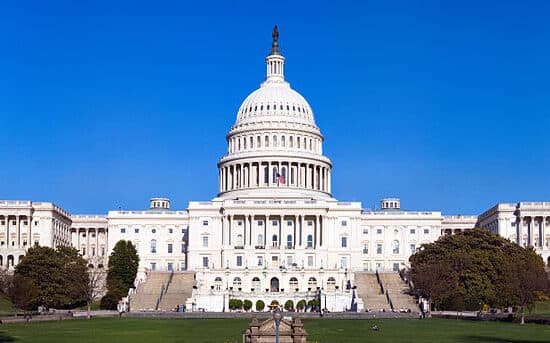
Teaching the Bill of Rights: The Fourteenth Amendment
E Lesson
E Lesson
20 Min
Whether you are teaching the desegregation of the south during the civil rights era, the debate over abortion or discussing the current controversy concerning the RFRA in Indiana, the incorporation of the Bill of Rights through the 14th amendment is central to the social history of the United States. Although so central to our nation's history, it is a difficult and complex topic to teach. We're here to help!
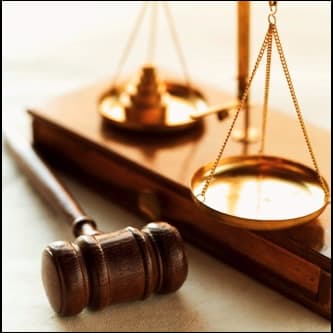
Strauder v. West Virginia (1879) and Smith v. State of Texas (1941)
E Lesson
E Lesson
20 Min
During the month of February, Black History Month, we spotlight two landmark cases involving racial discrimination in jury selection: Strauder v. West Virginia and Smith v. State of Texas. These landmark cases declared that racial discrimination in jury selection, whether by law or by systematic exclusion, violated the Equal Protection Clause of the Fourteenth Amendment.

Loving v. Virginia (1967)
E Lesson
E Lesson
20 Min
During Black History month we spotlight the landmark Supreme Court case of Loving v. Virginia(1967), which declared anti-miscegenation laws (laws banning interracial marriages) to be unconstitutional. The Court unanimously held that prohibiting and punishing marriage based on racial qualifications violated the Equal Protection and Due Process clauses of the Fourteenth Amendment.
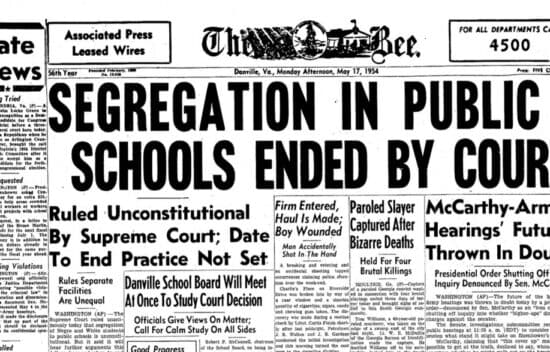
14th Amendment and Equal Protection
E Lesson
E Lesson
20 Min
How did two Supreme Court Cases, fifty-eight years apart, come to such radically different conclusions? Explore the cases of Plessy v. Ferguson (1896) and Brown v. The Board of Education of Topeka (1954) to discover how the court interpreted the Fourteenth Amendment’s Equal Protection clause in each case.

Quincy Railways v. Chicago (1897)
E Lesson
E Lesson
20 Min
The landmark case we explore this month is Quincy Railways v. Chicago (1897), which illustrates the doctrine of incorporation, or the application of Bill of Rights protections to the states through the Fourteenth Amendment.

J.E.B. v. Alabama (1994)
E Lesson
E Lesson
20 Min
This Landmark Cases and the Constitution eLesson spotlights the 1994 Supreme Court case J.E.B. v. Alabama. In this case, the Court struck down the use of preemptory challenges to remove jurors on the basis of sex as a violation of the Fourteenth Amendment’s Equal Protection Clause.
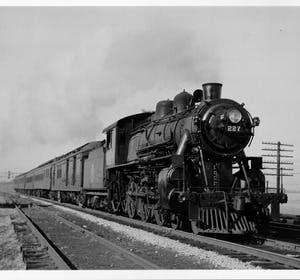
Essay: The Fourteenth Amendment and Incorporation
Essay - 1009 Words
Essay
1009 Words
The Bill of Rights, setting limitations on Congress, originally applied only to the national government. In the effort to protect individual rights of the freedmen, the Fourteenth Amendment was ratified in 1868. It differs from every previous amendment because it limits what state governments may do. Over the next seventy-five years, the Court's use of the Fourteenth Amendment increased. It used the Due Process clause in that amendment to strike down many state laws and to selectively incorporate parts of the Bill of Rights into the Fourteenth Amendment so as to make them apply to states as well as the federal government. This practice, known as "incorporation," increased the Supreme Court's power to define rights for the entire Union, and reduced the power of the states as compared to federal power. It also reduced the power of Congress as opposed to the Supreme Court, to define which rights are properly constitutional. This changed the meaning of the Bill of Rights from a series of limits on government power to a set of rights belonging to the individual and guaranteed by the federal government.
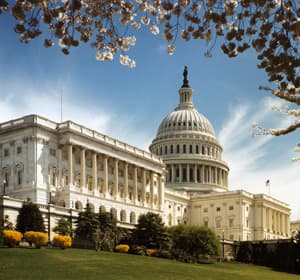
Essay: The Progressive Era
Essay - 1484 Words
Essay
1484 Words
Part of the Civil War’s legacy was a shift in the role of the national government. The defeat of the South, Reconstruction, and the Supreme Court’s interpretation of the Fourteenth Amendment gave the national government growing power over the states and the people. The Fourteenth Amendment gave the national government power (though exactly how much power was still being debated) to ensure state laws did not violate the rights of the freedmen. Additional amendments during the Progressive Era (the 1890s - 1920s) continued this transfer of power to the national government. In the name of giving power to the people, the national government was given power to tax incomes; states lost their representation in Congress, the manufacture and sale of alcohol was banned, and women were given the right to vote.
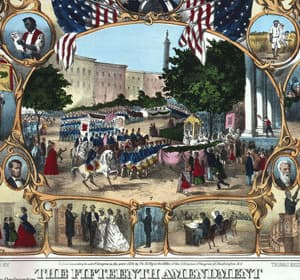
Essay: The End of Slavery and the Reconstruction Amendments
Essay - 1033 Words
Essay
1033 Words
The interests of northern and southern states grew increasingly divergent. Eleven states eventually seceded from the Union and formed the Confederate States of America. After the Civil War, Congress required that the southern states would approve the Thirteenth, Fourteenth, and Fifteenth amendments as a condition of their re-entry into the union. The 13th Amendment banned slavery throughout the United States. The Fourteenth Amendment granted citizenship to formerly enslaved people and banned states from passing laws that denied the privileges and immunities of citizens, due process, or equal protection of the law. The Fifteenth Amendment extended the right to vote to black men. The Fourteenth Amendment in particular was a dramatic departure from the Founders ’Constitution, and set the stage for dramatic increases in the size, scope, and power of the national government decades later.

The Fourteenth Amendment and Incorporation
Lesson - 5 Activities
Lesson
5 Activities
80 Min
The Bill of Rights, setting limitations on Congress, originally applied only to the national government. In the effort to protect individual rights of the freedmen, the Fourteenth Amendment was ratified in 1868. It differs from every previous amendment because it limits what state governments may do. Over the next seventy-five years, the Court’s use of the Fourteenth Amendment increased. It used the Due Process clause in that amendment to strike down many state laws and to selectively incorporate parts of the Bill of Rights into the Fourteenth Amendment so as to make them apply to states as well as the federal government. This practice, known as “incorporation,” increased the Supreme Court’s power to define rights for the entire Union, and reduced the power of the states as compared to federal power. It also reduced the power of Congress as opposed to the Supreme Court, to define which rights are properly constitutional. This changed the meaning of the Bill of Rights from a series of limits on government power to a set of rights belonging to the individual and guaranteed by the federal government.
80 Min

Andrew Johnson and the Civil War Amendments
Lesson - 2 Activities
Lesson
2 Activities
50 Min
President Andrew Johnson saw himself as a protector of the United States Constitution during and after the Civil War. In his efforts to preserve and restore the Union, he supported the Thirteenth Amendment ending slavery. The same motive led him to oppose the Fourteenth Amendment because he believed it would infringe on the legitimate powers of the states. In this lesson, students analyze Johnson’s leadership with respect to Reconstruction, and specifically his response to the passage of the Thirteenth and Fourteenth Amendments.
50 Min

The Progressive Era
Lesson - 3 Activities
Lesson
3 Activities
Part of the Civil War’s legacy was a shift in the role of the national government. The defeat of the South, Reconstruction, and the Supreme Court’s interpretation of the Fourteenth Amendment gave the national government growing power over the states and the people. The Fourteenth Amendment gave the national government power (though exactly how much power was still being debated) to ensure state laws did not violate the rights of the freedmen. Additional amendments during the Progressive Era (the 1890s - 1920s) continued this transfer of power to the national government. In the name of giving power to the people, the national government was given power to tax incomes; states lost their representation in Congress, the manufacture and sale of alcohol was banned, and women achieved the right to vote.

The End of Slavery and the Reconstruction Amendments
Lesson - 5 Activities
Lesson
5 Activities
60 Min
The interests of Northern and Southern states grew increasingly divergent. Eleven states eventually seceded from the Union and formed the Confederate States of America. After the Civil War, Congress required that the southern states would approve the Thirteenth, Fourteenth, and Fifteenth amendments as a condition of their re-entry into the union. The Thirteenth Amendment banned slavery throughout the United States. The Fourteenth Amendment granted citizenship to formerly enslaved people and banned states from passing laws that denied the privileges and immunities of citizens, due process, or equal protection of the law. The Fifteenth Amendment extended the right to vote to black men. The Fourteenth Amendment in particular was a dramatic departure from the Founders’ Constitution, and set the stage for dramatic increases in the size, scope, and power of the national government decades later.
60 Min

What is Incorporation?
Lesson - 3 Activities
Lesson
3 Activities
60 Min
The Fourteenth Amendment was originally written to ensure that freed slaves would be treated as citizens, but, in the twentieth century, the Supreme Court used the amendment's Equal Protection and Due Process Clauses to expand the protections provided in the Bill of Rights to the states. This concept of extending, called incorporation, means that the federal government uses the Fourteenth Amendment and the Bill of Rights to address limitations on liberty by states against their citizens. This lesson explores the significance of this amendment and incorporation and its effects on our constitutional structure.
60 Min
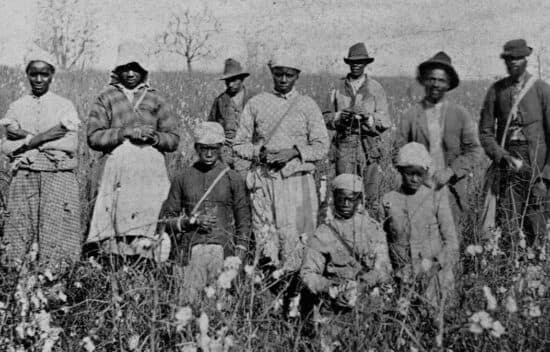
The Emergence of Black Codes DBQ
Lesson - 1 Activities
Lesson
1 Activities
90 Min
Use this Lesson once students have a strong understanding of the rights of African Americans both before and after the passing of the Thirteenth and Fourteenth Amendments. It would also be helpful for students to have read the O. O. Howard and the Freedmen’s Bureau and The Ku Klux Klan and Violence at the Polls Narratives.
90 Min
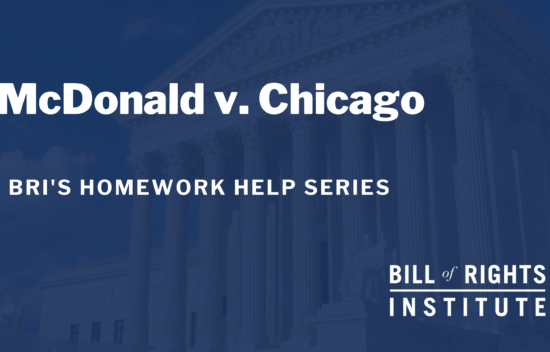
McDonald v. Chicago | Homework Help from the Bill of Rights Institute
Video
Video
4 Min
Does the Second Amendment prevent a city from effectively outlawing handgun ownership? In 2008, Otis McDonald attempted to purchase a handgun for self-defense purposes in a Chicago suburb. However, the city of Chicago had banned handgun ownership in 1982 when it passed a law that prevented issuing handgun registrations. McDonald argued this law violated the Fourteenth Amendment’s Privileges and Immunities Clause as well as the Due Process Clause. In a 5-4 decision, the Court ruled that McDonald’s Second Amendment right to bear arms was protected at the state and local level by the Due Process Clause of the Fourteenth Amendment.
4 Min

The 14th Amendment & Religious Liberty | Mark Rienzi | BRI’s Constitutional Conversations
Video
Video
2 Min
Learn more about the relationship between the fourteenth amendment and religious liberty with Mark Rienzi, President of Becket Law.
2 Min
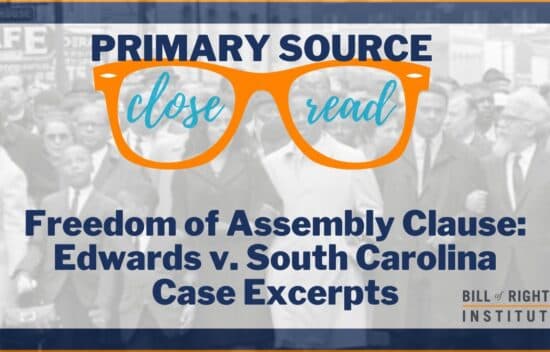
Freedom of Assembly Clause: Edwards v. South Carolina Case Excerpts
Video
Video
15 Min
The First and Fourteenth Amendments protect assembly, but what kind of assembly are they referring to? To explore this question Josh Schmid is joined by Dr. Joshua Dunn as they explore the Supreme Court Case of Edwards v. South Carolina, which questioned whether government officials had a right to force a peaceful protest to disperse. What impact does this case have in the modern day?
15 Min

Incorporation | BRI’s Homework Help Series
Video
Video
4 Min
In this Homework Help narrative, learn about the constitutional principle of incorporation and its historic context. After the passage of the 14th Amendment, the Due Process Clause caused many national and state debates, leading to the idea of incorporation and the fundamental question of whether the Bill of Rights applies to states as well as the federal government.
Has incorporating the Bill of Rights to apply to the states created greater liberty for Americans?
4 Min
